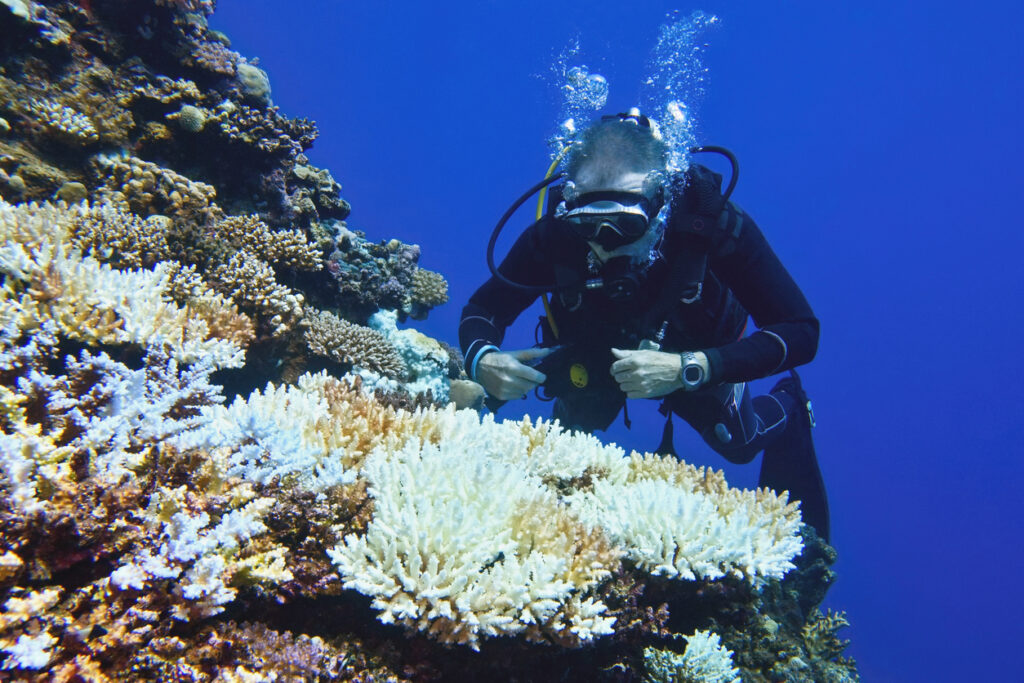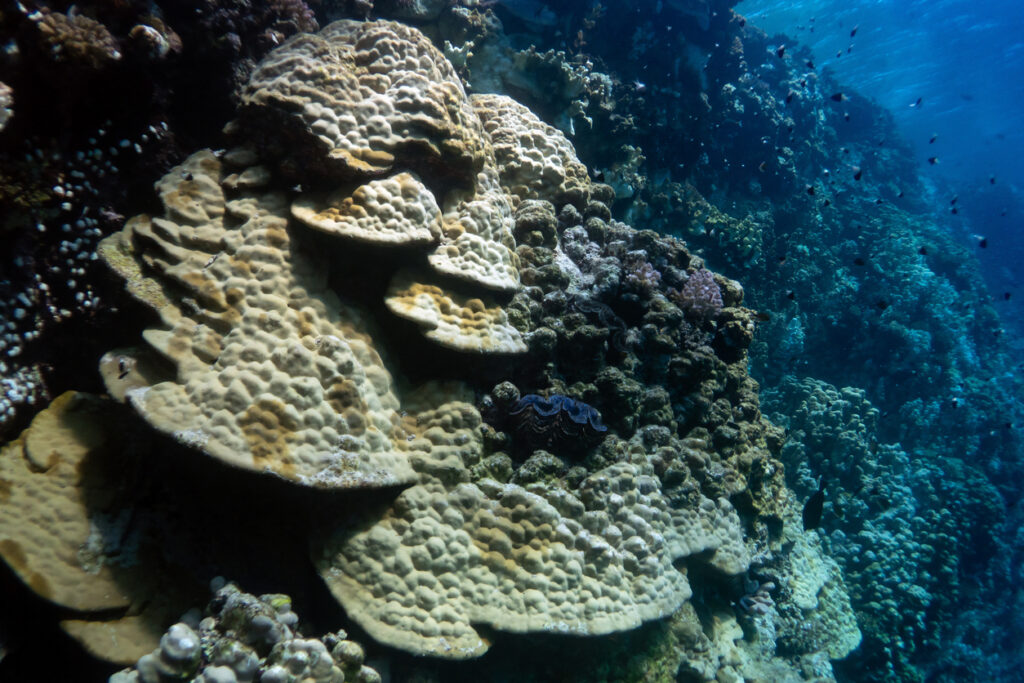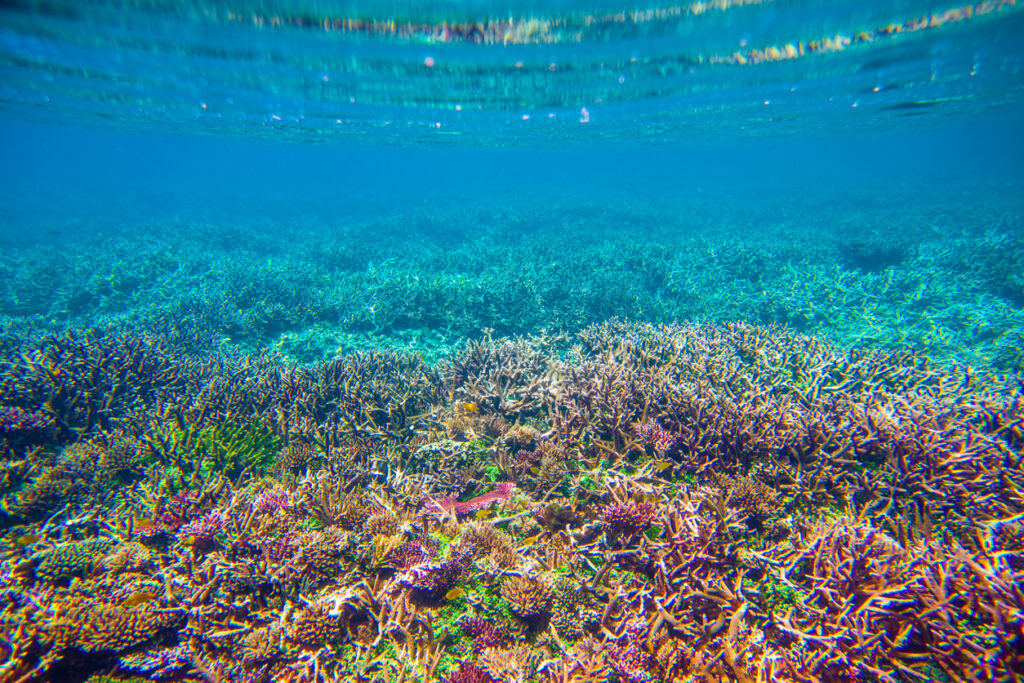
It might sound like a strange silver lining: as coral reefs decline, the ocean could actually end up absorbing more carbon. But it’s not quite the climate win it first appears to be. Coral reefs are incredibly active ecosystems, and their slow destruction doesn’t just affect marine life — it changes the very chemistry of the sea. Here’s what’s going on beneath the surface, and why the loss of coral could cause a complicated shift in how the ocean deals with carbon.
Coral reefs actually release carbon as they grow.
It surprises a lot of people, but growing corals release carbon dioxide during the process of building their skeletons. As they form calcium carbonate structures, CO₂ is a natural byproduct. So even though corals are living ecosystems, they contribute small amounts of carbon back into the water as part of their development.
This means that when coral growth slows or stops, that release of CO₂ also stops. It’s a bit of an odd twist—the very things we’re desperate to protect are actually giving off carbon as they build the structures we associate with healthy marine life.
A decline in calcification lowers oceanic CO₂ output.
As coral reefs die back and calcification declines, there’s a measurable drop in how much carbon dioxide is released into seawater from reef-building. That subtle change in ocean chemistry means there’s slightly more room for the ocean to absorb CO₂ from the atmosphere instead.
It’s not a massive change, but it’s noticeable, especially over long timescales. Fewer living corals equals less CO₂ bubbling up from reef growth, and that alters how much carbon the ocean can take in from above.
Carbon uptake may rise by a few percent.
Modelling suggests that this reef-related shift could mean the ocean absorbs 1–5% more atmospheric carbon by 2100 than it otherwise would. And if coral loss continues into the far future, that figure could creep up to around 13% by 2300.
But it’s important to remember this is a fraction of a much bigger system. Even a small change in carbon uptake on a global ocean scale is significant, but it doesn’t come close to outweighing the ecological damage being done to reef environments.

Coral skeletons lock away massive amounts of carbon.
Even though they release some CO₂ during growth, coral reefs still store a huge amount of carbon within their physical structures. Estimates suggest they lock away between 70 and 90 million tonnes of carbon each year—a massive natural reserve built up over thousands of years.
When reefs bleach, crumble, or dissolve, that stored carbon is no longer locked up. And when new growth stops, the sequestration stops too. So yes, CO₂ output from calcification drops — but so does the storage benefit we get from thriving coral systems.
Ocean acidification makes things worse on both ends.
As atmospheric CO₂ increases, more of it dissolves into the ocean, making the water more acidic. This acidification directly harms corals by weakening their ability to form skeletons, which means less calcification and more reef decline.
Ironically, the more acidic the ocean gets, the better it becomes at absorbing CO₂—up to a point. However, this also pushes corals into an even more fragile state, creating a damaging feedback loop where climate stress improves short-term carbon uptake but wrecks the ecosystems doing the storing.
It’s not a climate win; it’s a biodiversity loss.
The idea that the ocean might absorb more carbon as reefs die can sound like good news, but it’s more of a consolation prize than a solution. The ecosystems we’re losing provide food, coastal protection, tourism income, and shelter for thousands of species.
Without them, the ocean may look “better” on a carbon graph, but it’ll be poorer in every other way. Coral reefs aren’t just pretty or symbolic—they’re part of how the planet regulates itself. Their collapse might buy a little more carbon space, but at a huge ecological cost.
Other ecosystems can’t fully replace coral loss.
There are other marine environments that store carbon—like sea grasses, mangroves, and salt marshes—and they’re incredibly important in their own right. However, they can’t replace coral reefs. The function, biodiversity, and structure that reefs provide are unique. So, even if blue carbon habitats remain intact, they won’t make up for what’s lost when reefs fade away. You can’t simply swap out a reef for a mangrove and expect the planet’s systems to balance out. It’s not that simple.

Coral decline changes the entire marine food chain.
Reefs support everything from tiny plankton to large fish to marine mammals. When they start disappearing, entire food webs become unstable. That doesn’t just affect tropical waters, either. The ripple effects can shift ocean populations on a much wider scale.
Even if the ocean’s chemical makeup is absorbing more carbon, the biological systems holding everything together are falling apart. When life disappears, the knock-on effects for fishing, culture, and ecosystems become impossible to ignore.
Long-term carbon shifts won’t reverse climate change.
Even if the ocean pulls in a bit more carbon because of reef loss, it won’t be enough to significantly slow global warming. The extra carbon absorbed is still just a drop in the bucket compared to what’s being pumped into the atmosphere by fossil fuels. This is more of a side effect than a climate solution. And framing it as a benefit risks ignoring the very real destruction happening to one of Earth’s most valuable ecosystems.
Protecting reefs still matters more than ever.
Rather than treating their loss as a weird advantage, this is the moment to double down on protection. Coral reefs regulate the climate, support marine life, and guard our coastlines. They do so much more than we give them credit for.
If we want the ocean to stay healthy, and to keep helping us manage carbon in the long run, then saving coral reefs isn’t optional. It’s one of the clearest signs of how climate and biodiversity are connected, and why one can’t be fixed without the other.